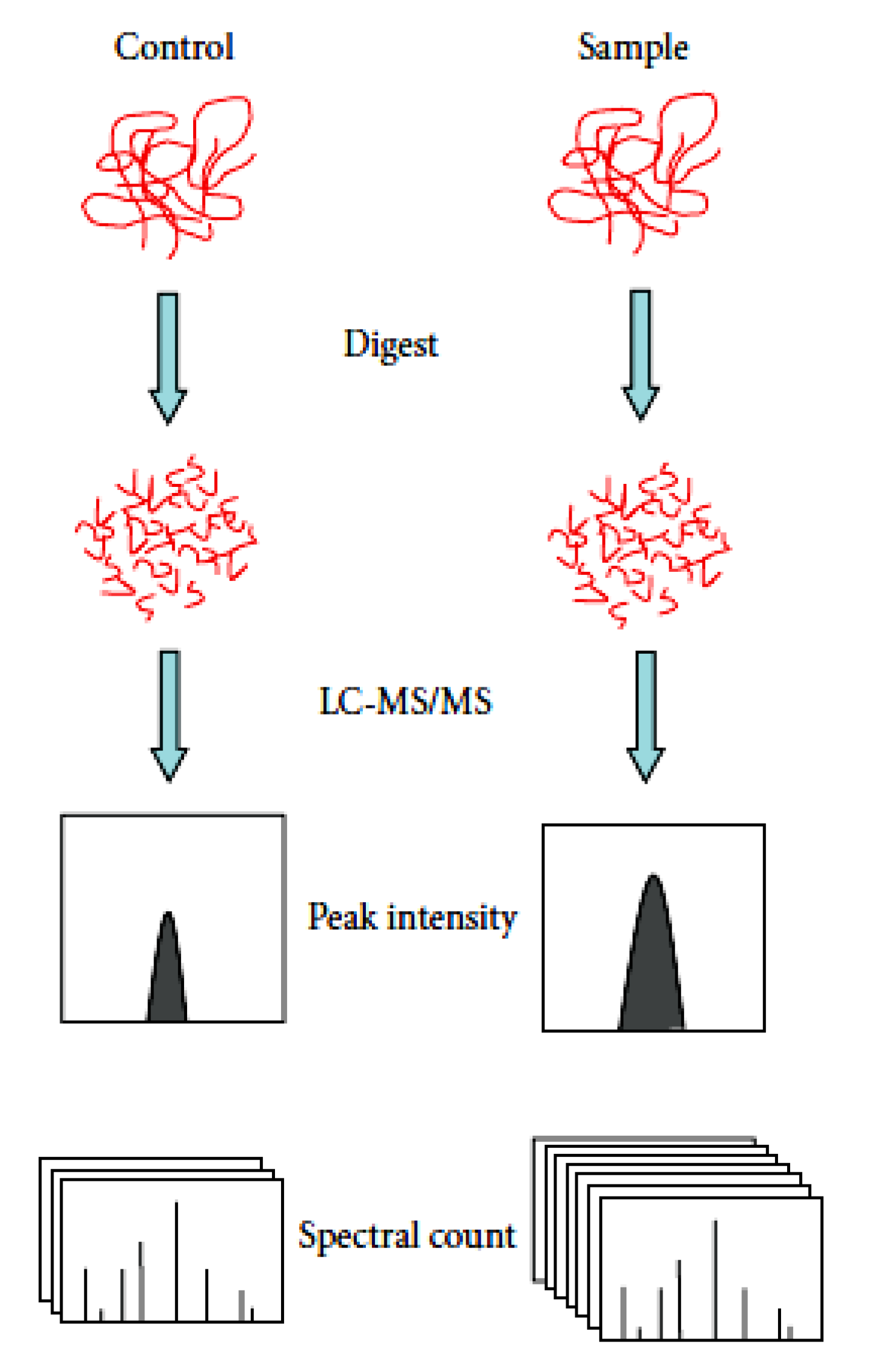Label-Free Peptide Quantification Service
Label-free peptide quantification is a mass spectrometry-based quantitative peptidomics analysis method that utilizes changes in the MS signal intensity of peptides across different samples to achieve relative quantification, without the need for additional isotopic or chemical labeling. The basic principle is to compare the peak area or signal intensity of peptides in different samples under standardized sample preparation and mass spectrometry analysis workflows to infer their relative abundance differences. This method is suitable for expression comparison studies in multiple samples and complex conditions.
Label-free peptide quantification service is widely applied in various research fields, including protein degradation mechanism studies, biomarker screening, disease mechanism analysis, and drug action mechanism exploration. It is particularly suitable for projects where labeling cannot be introduced due to experimental conditions or where research budgets are limited. The label-free method offers advantages such as simplified workflows, high throughput, and low cost, making it an essential tool in functional peptide research and quantitative proteomics analysis.
Services at MtoZ Biolabs
Based on a high-resolution liquid chromatography-mass spectrometry (LC-MS) platform, MtoZ Biolabs introduces the label-free peptide quantification service focusing on label-free quantitative analysis of peptides from obtained samples. This service does not require the introduction of isotopic or chemical labels. Instead, it compares the relative abundance of peptides across different samples using mass spectrometry signal intensity. It can be widely applied to peptide expression analysis from various sample sources, such as serum, plasma, tissues, and cells, helping clients obtain high-throughput, high-precision quantitative data to support subsequent differential expression studies and biological function exploration.
Analysis Workflow
1. Sample Preparation and Peptide Extraction
Provide samples that have already been extracted for peptides, ensuring that the samples are free from protein contamination and that the peptides' integrity and quality are maintained. If you require us to extract peptides, please ensure there is an adequate sample quantity.
2. Peptide Separation and Liquid Chromatography-Mass Spectrometry (LC-MS) Analysis
Use high-resolution liquid chromatography-mass spectrometry platforms to separate and quantify the peptides, detecting the signal intensity of target peptides in the samples.
3. Data Collection and Quantification
Data is collected through the mass spectrometer, and professional software is used to identify peptides. Quantitative analysis is then performed based on signal intensity, calculating the relative abundance of peptides across different samples.
4. Result Interpretation and Report Generation
A quantitative data report is generated, including the relative abundance of peptides and differential analysis, supporting subsequent functional annotation and biological research.

Deracinois, B. et al. Proteomes, 2013.
Figure 1. The Analysis Workflow of the Label-Free Peptide Quantification.
Sample Submission Suggestions
1. Sample Type
Customers can provide samples with peptides already extracted, ensuring sample quality and peptide integrity. We also support a variety of biological sample types, including serum, plasma, tissue homogenates, and cell lysates.
2. Sample Storage and Transportation
Samples should be stored at -80°C and transported using dry ice to prevent sample degradation and repeated freeze-thaw cycles. It is recommended to remove particulate contaminants before transport to ensure sample purity.
3. Sample Information
Please provide detailed sample information, including sample origin, processing methods, and whether there are any exogenous labels, to optimize the analysis process and ensure data accuracy.
Service Advantages
1. High Throughput and High Precision
Using high-resolution mass spectrometry, the service can efficiently and accurately quantify peptide expression across multiple samples, making it ideal for large-scale quantitative comparisons.
2. One-Time-Charge
Our pricing is transparent, no hidden fees or additional costs.
3. High Sensitivity and Reproducibility
With advanced mass spectrometry platforms, we can precisely detect low-abundance peptides in complex samples, ensuring high sensitivity and reproducibility in the data.
4. Customized Service Plans
Based on the research needs of our clients, we offer personalized experimental designs, allowing flexible adjustments to the analysis strategy to meet the requirements of various research fields.
Applications
1. Multi-Sample Comparison Analysis
Label-free peptide quantification service is suitable for comparing multiple samples under different treatment conditions or time points, helping to reveal expression differences of peptides in biological processes.
2. Protein Expression Profiling
This service can be used for peptide expression profiling in proteomics research, supporting the quantitative analysis of functional peptides and signaling peptides, providing data support for protein expression regulation studies.
3. Cell Signaling Pathway Research
It helps research the activation and inhibition of intracellular signaling pathways, monitoring changes in key peptides involved in cellular function regulation, and providing quantitative data for signal transduction processes.
4. Biomarker Discovery
Label-free peptide quantification service can be used to screen disease-related biomarkers by comparing peptide expression differences across different sample groups, assisting in the discovery of potential biomarkers.
FAQ
Q1: Does the Service Support Comparisons between Different Samples?
A1: Yes, this service supports comparative analysis between different samples, suitable for quantitative difference studies across treatment conditions, time points, or groups. By comparing the relative abundance of peptides in different samples, it helps to reveal potential biological differences or regulatory mechanisms.
Q2: Does the Service Support the Analysis of Post-Translational Modification (PTM) Peptides?
A2: Yes, while the label-free peptide quantification service is primarily designed for peptide quantification, we can offer enhanced detection sensitivity for post-translational modification peptides (such as phosphorylation, acetylation, etc.) by incorporating PTM enrichment strategies. This ensures more accurate quantification data for modified peptides.
Deliverables
1. Comprehensive Experimental Details
2. Materials, Instruments, and Methods
3. Data Analysis, Preprocessing, and Estimation
4. Bioinformatics Analysis
5. Raw Data Files
How to order?







